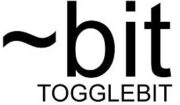A better how-to for software is in the works. Below is the readme from the library and examples code we have posted on github
Note: If you are using an older IDE v1.5x follow the link to these instructions
OBD2 and CAN Acquisition Libraries
These libraries were designed with continuous message TX/RX (DAQ applications) in mind by implementing a periodic scheduler. The scheduler supports both native DUE CAN ports and allows for one to easily implement a “free-running raw” CAN protocol or perhaps something a bit more layered such as OBD2. An OBD2 implemenation is provided, and logged CAN traffic and screen data are provided in the repository (driveHome. files).
Thank you for actually reading the readme and contributing!
Installation
What you need to do to get it working (assuming a windows installation):
1. download Arduino IDE R 1.6.x http://www.arduino.cc/en/Main/Software
2. download all of the files from the togglebit repository: Togglebit GitHub
3. After IDE installation, create a new folder called “CAN” under a path C:\Program Files (x86)\Arduino\libraries\
4. Next drop all files( .c,.h and *.ino) into the new folder (C:\Program Files (x86)\Arduino\libraries\CAN)
5. Open Arduino IDE 1.6x to Tools->Boards->Boards Manager and download the Adruino SAM (32-bit ARM cortex-M3) boards hardware support kit
6. Once installed, go to boards select the Arduino DUE board ad the target board under “Tools”.
7. Opening any of the examples ( *.ino) files will create a new folder. You should also see a folder called “CAN” under the “Examples” menu.
8. You will now be able to verify, upload and tryout the examples!
Getting Started with Free Running CAN
To transmit a message five times a second:
```c++
//create the CANport acqisition schedulers
cAcquireCAN CANport0(CAN_PORT_0);
//define a CANFrame object
cCANFrame RAW_CAN_Frame1;
//start CAN ports, set the baud rate here
CANport0.initialize(_500K);
//then set the ID and transmission rate
RAW_CAN_Frame1.ID = 0x100;
RAW_CAN_Frame1.rate = _5Hz_Rate;
//add to the scheduler
CANport0.addMessage(&RAW_CAN_Frame1, TRANSMIT);
// call the scheduler in a 2mS timer iterrupt
CANport0.run(TIMER_2mS);
// manipulate CAN payload in loop() or wherever appropriate
RAW_CAN_Frame1.U.b[0] = i;
```
Getting Started with OBD2 PID’s (referencehttp://en.wikipedia.org/wiki/OBD-II_PIDs)
To get engine RPM:
```c++
//create the CANport acqisition schedulers
cAcquireCAN CANport0(CAN_PORT_0);
//define an OBDParameter object
cOBDParameter OBD_Speed("Speed ", " KPH" , SPEED , _8BITS, false, CURRENT, 1, 0, &CANport0);
//start CAN ports, set the baud rate here
CANport0.initialize(_500K);
// call the scheduler, preferable in an interrupt
CANport0.run(TIMER_2mS);
//show acquired data in loop() wherever appropriate
Serial.print(OBD_EngineSpeed.getName());
Serial.print(OBD_EngineSpeed.getData());
Serial.println(OBD_EngineSpeed.getUnits());
```
TIPs and Warnings
- The first revision of code was developed for functionality and not speed. For example, there is only one CAN mailbox implemented.
Many many speed efficiencies are yet to be found and optimized.
- The underlying CAN library provided here "due_can.*" may not be the latest contributions from the DUE forum.
- the OBD2 has only beent tested on one vehicle so far with 11-bit identifiers
- To create an OBD PID that does not yet exist see the relevant enums in the OBD2.h file.
- Thanks to collin80 for developing the original due_can.* libraries and ivanseidel for developoing the DUETimer libraries
- When in doubt, check your wiring and termination resistors ;)
Hardware Information
See: www.togglebit.net for the latest CANshield and protoshield hardware for the Arduino DUE
Version History
1.0 (2014-18-03): Original release
